Here we’ve thoroughly reviewed the best skis for beginners so you can easily make the right buying decision.
As a beginner, skiing could cause you more fright than thrill because keeping balance while sliding on the slippery snow can appear formidable. Panic resulting from sudden acceleration could make you lose control. In my three-year ski patrolling career, I’ve witnessed countless mistakes done by beginners. Most of which could’ve been avoided if they had put on the right skiing gear and chosen the right skis in the first place.
For starters, skis are the most important of all other snow skiing gear and you don’t want to end up with a wrong purchase; especially when your safety is concerned. Remember that skiing slopes are unforgiving, so, gearing up correctly would be the safest choice. Once that is ensured, you’re free to enjoy the pleasure limitlessly.
With that in mind, my team grabbed the best skis for beginners from the heart of the market for you. Let’s dive right into our detailed reviews and in-depth buyers’ guide to pick a pair for yourself.
Table of Contents
Top 10 Best Skis For Beginners Review
01 Gravel Salomon XDR 76 ST C (Editor’s Choice)
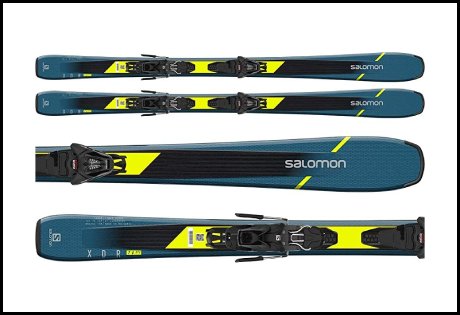
Salomon has existed since 1947 and has always been a reliable option when looking for an ideal beginner ski. The Salomon XDR 76 is exactly what you need if you’re new to this sport.
These skis measure at 120/76/102; so, the 76mm middle ensures you’ll have excellent control and ease of turn. The XDR 76 also has a rocker tip and early rise tail, making them pretty forgiving in all terrains.
Moreover, the XDR 76 construction makes it an ideal option for those eager to spend all day on powders and groomers. The core is of Poplar wood with a titanium reinforcement underfoot for better rigidity and stability. Another exciting part of the base for us was the basalt fiber layer planted throughout the ski’s length, which helped absorb shock.
We were happy with the included bindings, especially for their ease of setup. The price was reasonable, though it was not a huge money-saver.
Specifications
- Measurement: 120/76/102
- Level: beginner-intermediate
- Radius: 11m
- Terrain: All-mountain
Pros
- Extremely forgiving
- Flexible
- Attractive design
- Solid build
- Installed bindings
Cons
- No poles
Our Verdict
With excellent construction, quality bindings, and exceptional performance this pair stands as one of the best skis for beginners. You’ll be amazed at how easily they turn in all terrain. No wonder it’s one of the best-rated models on the list. We recommend this pair for beginners and intermediate skiers who want to keep improving their skills.
02 Nordica NRGY 90 Skis Sz 177cm (Also Great)
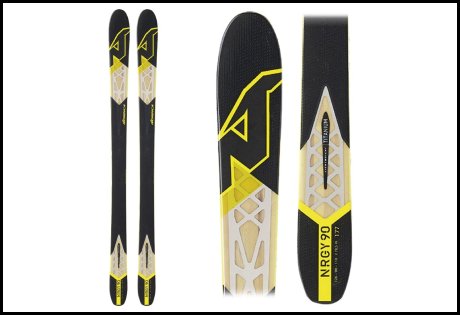
Another exceptional beginner ski for those who desire to hit multiple terrains, the Nordica NRGY 90, is highly versatile. This skis pair has many features that’ll interest any new skier who wants more than fun. First, it has a broader waist, which gives it a performance plus on all trails without losing the qualities of an ideal freshers choice. With this, you can try out various turns and twists without worrying about the ski’s stability.
It also has a sturdy build that gives you more skiing options lacking in many similar beginner models out there. Moreover, this pair is one of the cleverest designs we’ve listed. Yes, the company makes it portable and highly attractive. It’s well-detailed and the color combinations are impressive. As a result, you’ll look more stylish when paired with your favorite sportswear.
That said, we had a good experience with its handling of bumps and stability at speed. Besides, it felt light and flexible, easy to control powder and groomers. We didn’t have problems with its performance, so it was worth the price.
Specifications
- Dimensions: 70 x 7 x 3 inches
- Weight: 7.65 pounds
Pros
- Good construction
- Great value for the price
- Tough
- Versatile
- Durable design
Cons
- High price
Our Verdict
This model showcased excellent performance on powder slopes and off-piste descents. Though a little expensive, we believe it’s good value for the money. So, if you want to try different environments without minding the bumps, the Nordica NRGY 90 is your ideal choice.
03 Nordic Rocks Kids Beginner Skis and Poles
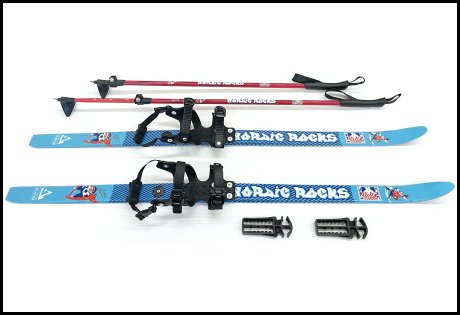
The Nordic Rocks is an excellent ski for children aged 6 to 13 who are newbies to skiing. It has a built-in wood core of 47 inches, making it a reliable option for skiers who want a unit to grow with it. Also, this ski has a step-in binding with customizable buckles that fits any shoe size.
With this, you don’t need specialized ski boots. All we did was place our shoes and tighten the straps. We also noticed that bindings were released manually. Still, the straps were easy to use and held tight on our child’s boot pair.
The package includes extendable aluminum poles with length ranging between 90 to 130cm. Besides, the included ski clips will help to hold the poles securely. Luckily, the poles were easy to adjust and we loved the fact that our children would use it for many years.
This ski is also of high-quality and long-lasting that might allow your child to pass it to his/her younger siblings. However, we found that this unit wasn’t the best option for downhill skiing.
Specifications
- Dimensions: 47 x 2 x 0.5
- Length: 47 inches
- Age: 6 to 13 years
- Core material: Wood
- Pole length: 35 – 51 inches
Pros
- Adjustable poles
- Great edge control
- Ski clips
- Customizable bindings
- Sleek design
Cons
- Not great for downhill
Our Verdict
The Nordic Rocks ski is a great way to introduce your child to the world of skiing. This pair is well-made and pocket-friendly, so we strongly recommend it to parents and grandparents who want to pass their skiing skills to their kids.
04 SOLA Winter Sports Kid’s Beginner Snow Skis
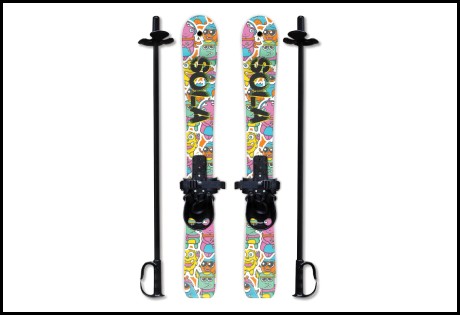
Don’t forget that you don’t need to break the bank to get the right ski pair for your young ones. So, if you’re searching for a low priced option with good build-quality, choose this SOLA model.
The SOLA ski has durable plastic construction; therefore, it’s incredibly lightweight and easy to use. Besides, the length is 27.25 inches, and width is 3.5 inches, making it the right option for kids aged from two to four years.
This SOLA ski has pre-mounted bindings, but unlike our previous choice, it’s bindings only work with hard ski boots. It includes a pole for extra balance and control on the snow, but this pull isn’t extendable.
However, the many beautiful and attractive designs will make your child stand out from the crowd.
Specifications
- Size: 27.5 x 3.5 inch
- No. of poles: 2
- Age: 2 – 4 years
- Material: Heavy-duty plastic
- Weight: 2.5 pounds
Pros
- Scale base for better grip
- Color designs
- Durable plastic construction
- Lightweight
- Includes pull
Cons
- Doesn’t work with non-ski boots
Our Verdict
This pair of skis are of excellent quality, and the poles are safe for toddlers. We liked the gripping. The graphics are pleasing and the build is decent, I mean it’s easy to see why it’s one of the best-rated models on the list. You can’t really go wrong with them and they’ll surely grow the love for skiing in your child.
05 K2 Press Skis 2020
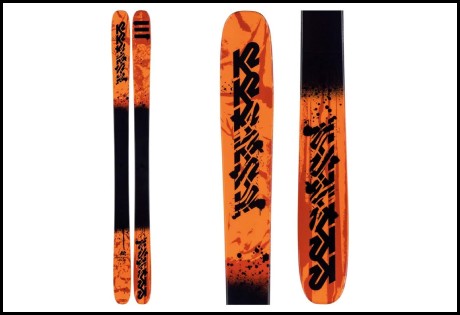
If you’re looking for the perfect ski for a progressive skier, the K2 Press unit is worth considering. The ski is light and easy for beginners to handle. Besides, we saw that the tip and tail were soft, which allowed fresh skiers to make smooth turns.
Interestingly, this model features the patented DuraCap construction technology. This is a specialized molding process that covers the core’s exterior to protect the internal materials. As a result, the unit is lighter, durable, and more forgiving.
The core material is wood, but the carbon braid running through the ski’s length provides extra energy during your pop. However, we found that it was too flexible for heavyweight skiers. It was also easy to turn on ice but a little slow in powder.
Specifications
- Dimensions: 111/86/106mm
- Flex: Very soft
- Core: Wood & Carbon
- Type: Mountain Skis
- Skill range: Beginner to Intermediate
- Warranty: Two years
Pros
- Lightweight and flexible
- Ideal for beginner and intermediate skiers
- Durable
- Extremely forgiving
- Useful in all-terrain
Cons
- No bindings included
Our Verdict
This pair is an excellent all-terrain ski for the price. They allow you to turn smoothly and quickly. Keep in mind that they’re highly flexible, which can be an issue for heavyweight skiers. Meanwhile, if you’re ready to try out new skills in the park or mountain terrain, this K2 Press is for you.
06 Rossignol 2019 Experience 74 Skis w/Xpress
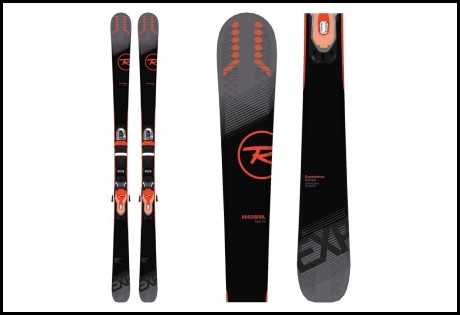
Many stable skis can be pretty heavy, and this is where the Rossignol 74 makes a difference. The core is made of carbon poplar, making it light but more durable. Despite having a solid construction, you’ll still find it easier to control. Of course, such specs combination is rare, but you shouldn’t expect anything less from the Rossignol brand.
Besides, it has a carbon fiber reinforcement underfoot to give it extra strength without increasing its weight. You can learn how to carve and make quick turns with little effort.
These skis have a 74mm middle, which implies they’re still narrow enough for the groomers and wide enough to allow you to float in powder. What’s more, with the included bindings, you’ll not have hassles fitting your boots. Thus, beginner skiers will find them more comfortable to use. However, they don’t come with poles.
Specifications
- Waist: 74mm
- Type: All mountain ski
- Skill level: Beginner to intermediate
Pros
- Solid turn radius
- Included bindings
- Easy to control
- High-quality construction
- Lightweight
Cons
- No poles attached
Our Verdict
The Rossignol 74 is a high-quality ski set with excellent value for the price. This pair will offer superior performance in powder and on groomed slopes. Therefore, it’s a reliable option for beginner and intermediate skiers who desire to improve their skills.
07 Head Unisex V-Shape V6 LYT
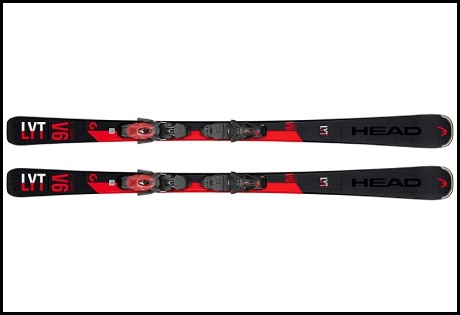
Head skis series is among the trendiest on the market today, and the Unisex V-Shape version is an excellent option for any aspiring skier. Like our previous choices, this ski is pretty easy to manage, coupled with its lightweight and simple rocker profile.
The combination of Karuba wood and graphene in the core gives it the perfect balance between agility, durability, and weight. Of course, graphene is lighter and stiffer than wood, giving you a solid feel when going downhill or initiating sharp turns. What’s more, the ski’s unique shape and taper ratio result in extra stability and a good grip when you carve.
The Unisex V-Shape has a 78mm waist, and that gives it a turning radius of 13.5m. Hence, the ski is fast, easy to carve, and offers excellent versatility for off-piste. Though this ski is a bit costly, this is a great buy considering what you’ll be getting.
Specifications
- Dimensions: 132/78/113mm
- Turn Radius: 13.5m
- Terrain: All-ride
- Speed: Medium
- Skill: Intermediate
Pros
- Graphene technology
- Lightweight and stiff
- Compatible binding
- Easy to carve
Cons
- A bit expensive
Our Verdict
The Head Unisex V-shape Ski has a perfect balance between price, quality, and performance. It’s construction technology, and material ensures that it serves you for long. Though the price is on the high side, it’s still the perfect option for any beginner skier.
08 Lucky Bums Kids Beginner Ski and Pole Set
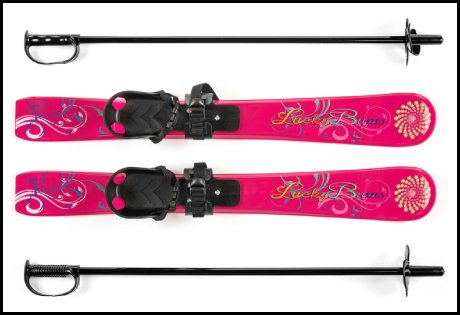
If you’re eager for a budget-friendly beginner ski, the Lucky Bums is the perfect model. It’s made of plastic with no metal edges, which makes it lighter and safe for your young ones. This pair is the cheapest on this list, while still giving you unbeatable performance and satisfaction.
Interestingly, the bindings can accommodate a wide range of kid’s snow boots up to about aged four. So, they are an excellent way for your toddler to learn balance on nicely packed snow.
This ski pair is available in blue, pink, and green, so you can choose the perfect match for your child’s outfit. It has a lifetime warranty against factory defects.
The Lucky Bums Ski comes with a 70cm pole that offers extra stability and ease of control. However, the pole isn’t adjustable and your kid might soon outgrow it.
Specifications
- Item Size: 28 x 4 x 0.5 inches
- Weight: 2.5 pounds
- Age Limit: 2 to 4 years
- Material: Plastic
Pros
- Flexible bindings
- Limited lifetime warranty
- Scales on the bottom
- Adjustable straps
- Two poles
- Cheap
Cons
- Non-adjustable pole
Our Verdict
These are great starter skis for your young ones and would allow you to introduce them to the sport. We’ve found these to be the best women’s beginner skis too. They have a smooth base and sled quickly on the snow. Above all, the Lucky Bums skis are a perfect pair for those looking for an excellent entry-level option for their kids.
09 Salomon QST 85 Skis
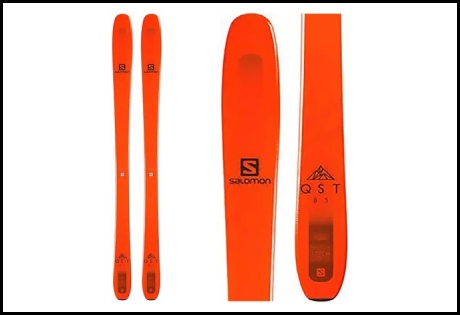
Salomon has a reputation for building high-quality, and excellent performance skis, and the QST 85 version confirms that fact. Most interestingly, the QST 85 skis have a resistant and flexible construction with a reinforced wooden core that keeps you floating during turns. Thus, this unit will provide the beginner to the intermediate skier with the most support and stability in all situations.
The waist measures at 85mm and has a turning radius of 17m. You’ll notice that it’s turn radius is a bit longer than other beginner options we’ve reviewed, but it’s something anyone can handle. Of course, you’ll get more comfortable with this ski as your skills improve over time.
The QST 85 skis pair has a vibration dampening pad to make your ride smoother and safer in the mountains. Also, the tip’s Koroyd insert reduces the swing weight for quicker maneuvering and stress-free skiing. For beginners, this ski is light, safe, and easy to handle. So, when paired with the right bindings, you’ll enjoy every bit of your ride.
Unlike our editor’s choice, this QST 85 version doesn’t come with bindings, which is the reason for its relatively lower price.
Specifications
- Size: 128/85/113mm
- Turn Radius: 17m
- Flex: Medium
- Core Material: Wood & Carbon
- Waist Width: 85mm
- Skill range: Beginner – intermediate
- Warranty: One-year
Pros
- All-mountain ski
- Wood and carbon core
- Sharp design
- 85mm underfoot
- Titanium reinforcements
- Lightweight and solid construction
Cons
- No bindings in the package
Our Verdict
If you want a ski that is top in terms of lightweight and stability, this one from Salomon is right up there. These are also the best beginner intermediate skis that you can buy today. Luckily, it costs a little lower than other high-rated options on this list yet offers excellent performance. We found that it lacked bindings but that wasn’t an issue for us considering that it was pocket-friendly and performed well. That said, we believe it’ll make a great addition to your list of skiing equipment.
10 Atomic 2020 Vantage 75C
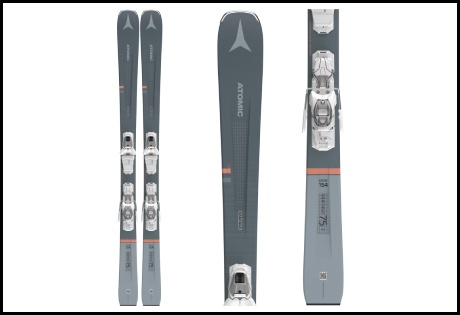
Atomic has been a dependable option for high-skilled skiers for decades, and this 2020 Vantage is designed to help grow your skills. This ski has everything you’ll need from a great beginner model. The core provides an energetic feel while keeping the weight low. With its progressive side-cut, you can initiate various turns at any speed, without much effort.
A flat tail, narrow waist, and low turn radius make it ideal for new skiers. The soft flex core makes this ski easy to turn for beginners. Besides, the integrated bindings offer easy setup and fit for all boot types. The ski’s quality design ensures that you’ll have zero problems on the slopes, and with the bindings, you’ll have fewer challenges trying out new skills.
Like our prior reviewed models, this ski is stable, easy to turn, and comfortable. Most importantly, the 2020 Vantage ski is robust and durable, so it’ll be a worthy investment.
Specifications
- Sidecut: 115/75/100mm
- Turn Radius: 15.1m
- Terrain: Groom and Powder
- Style: All-mountain
- Level: Beginner to Intermediate
Pros
- Light wood core
- Good control
- Provides extra stability
- Fun and comfortable
- Unisex ski
- Affordable
Cons
- No poles included
Our Verdict
This model is an excellent addition to our best beginner skis list since it’s reasonably priced and designed to offer a comfortable feel in all-terrain. Besides, it’s durability and ease of control makes it a healthy choice for any new skier.
Best Skis for Beginner: Buying Guide
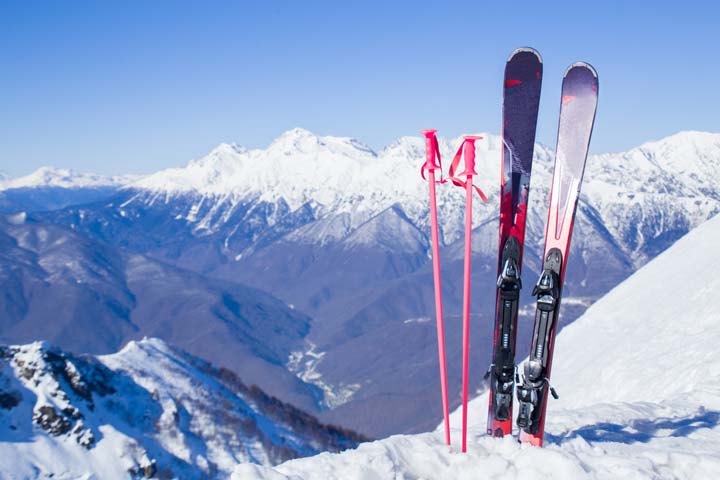
1. Ski Shape or Type
The trendiest ski types are camber, rocker, and mixed.
- Camber – Cambered skis have a convex shape with a raised middle. The contact points are at the tips and tails. Though the form makes turns difficult, they’re still suitable for beginners.
- Rocker – Also called reverse camber because of their convex shape. The profile has a banana-like shape with raised tips. Beginners prefer them because the tip’s design makes turns easier.
- Mixed – These skis combine camber and rocker shapes. The camber’s profile is in the middle while rocker’s is at the skis’ tips.
2. Length
Your height determines the right ski length to choose from. For beginners, pick a model that is about your height or 15cm shorter. But if you’re intermediate, opt for a model that’s 12 to 14cm shorter.
3. Waist Width
Wider skis measure around 95 to 105mm. They’re more stable and cruise better on snow than narrow versions. Because you’re skiing at low speed, you won’t gain much from stability as a beginner. So, we recommend newbie skiers select thinner models with widths between 75 to 80mm.
4. Style
If you prefer quick turns, choose shorter units, but if you like skiing at high-speed, opt for longer skis. Do not forget to put on padded shorts for safety if you prefer an aggressive style.
5. Core Material and Construction
Wannabe skiers might opt for skis with softcore that’s more forgiving during slip. Of course, it’s vital to choose units that can handle persistent abuse. Many manufacturers combine other materials with wood to enhance the skis’ properties. Let’s check the various core composites.
- Wood – Ski’s cores generally have classic wood strips like fuma, bamboo, beech, ash, marple laid together. Many makers use wood because they’re lively, maintain shape, dampen shock, and have low resonance.
- Carbon – Strong, light, lively, compression-resistant, but pretty expensive.
- Air – With air, manufacturers can reduce the core’s weight without making a considerable effect on its strength.
- Fiberglass – Like some longboard decks, skis can also be made from high-quality fiberglass material. It is cheap, light, and durable.
- Metal – Expensive but extraordinarily light and strong; for example, aluminum and titanium.
- Foam – The right amount of foam makes the ski more robust and more flexible.
6. Measurements
Skis measurements are this format – 120/76/102. These numbers give the width of the ski’s tip, middle, and tail in millimeters. With this, you can easily find your ideal measurement. As a beginner, look for skis with waist measurements between 70 to 85 mm. As mentioned earlier, avoid skis that are wider or narrower than this margin because they can increase your learning curve.
7. Turn Radius
The width difference between your ski’s tip and middle sections determines how well it turns. As a beginner, always opt for units with lower turn radius because they’re easier to manage. Practice parallel turns during training.
8. Bindings
Bindings help connect your boots to the skis. You should choose models with these extras.
9. Binding DIN Rating
This rating numbers between 1 to 18 and gives the force at which a ski binding releases a boot. Thus, a higher DIN rating implies binding will hold longer before a release. Beginner bindings shouldn’t stay too long to prevent injury and that’s why they have lower ratings.
10. Weight
As a beginner, you should opt for skis that’ll provide the best comfort but avoid super-light or heavy types because they’re harder to use. We’d recommend using specific skis designed for male and female users. That way, the weight distribution, and flexing would be optimum while sliding on the snow.
11. Terrain
If you plan to take fresh powder or main slopes, choose longer skis. But if you’re skiing on small hills, pick a shorter ski. Let’s talk about some of the renowned skiing terrains home and abroad.
Colorado’s Copper Mountain is an excellent skiing resort for beginners. Arapahoe Basin is another popular skiing spot in the US.
If you are from France or eventually travel the country, check out their Méribel, Courchevel 1850, Avoriaz and Flaine mountain resorts or Les Arcs skiing spots for starting your skiing journey. In Switzerland, Verbier is famous for beginner and expert skiers alike. Again, Italy’s Breuil-Cervinia alpine resort is another place to go. Austria’s Black-Diamond trail in Mayrhofen area is also popular.
12. Flexibility
Your skill level determines how rigid your ski is. That said, soft skis are ideal for beginners because they’re more forgiving, allowing them to make quick and smooth turns.
13. Budget
Beginner skis usually cost around $50 to $700. So, you should first decide how much you’re spending before you start your search.
How Advanced Skis Differ from Beginner Skis?
Whether they are beginners or intermediate learners, men or women, older or younger, all skiers want to have a lot of fun and improve their skills. If you want to try skis for the first time, the most important thing is to choose a pair that provides the most exceptional comfort and ease of use. On top of that, make sure you take care of your safety on the slope.
For beginners, you shouldn’t make the mistake of selecting an advanced ski as that alone could hamper your progress. That said, you should note their differences before you make your purchase.
| SN | Advanced skis | Beginner skis |
| 1. | Very stiff | Soft |
| 2. | Needs extra skill to manage | Easier to manage |
| 3. | Width and Waist are bigger | Standard size |
| 4. | Longer than 190 cm | About 170 to 180 cm long |
| 5. | Unlimited performance | Don’t allow some tricks |
| 6. | Suitable for faster speeds | Floppy at high speeds |
| 7. | High price | Lower price point |
Skis Care & Maintenance Tips
The benefit of taking good care of your ski pair is that it’ll perform well, and you’ll be at your best. Maintaining your ski will improve your feel such that you’ll enjoy a smoother ride while making quick and successful turns. So, here are a few tips to keep your equipment in good shape.
- Dry off after each ride – Use a towel to wipe off the melted snow to prevent rust on bindings and ski edges.
- Periodic sharpening of edges – If you spend more time carving on hard or icy snow, sharpen your ski’s edges at least once a week. However, constant filing will remove the ski’s metal material. Hence do it sparingly.
- Waxing – The presence of some white or grey areas on your ski’s bottom indicates the need to wax. Moreover, try to wax your ski when the season is ended. Used skis should be waxed properly to ensure their longevity.
- Adjustments– Adjust bindings to relieve the springs before storage
- Storage– Store in a cool and dry place
- Safety– Safety gears including snowboard gloves or mittens and ski masks are essential gear that you must wear before going out in the snow.
Useful Skiing Safety Tips
Skiing is thrilling and fun-filled but could also cause injuries. Below are things to do to stay safe.
- Wear a Helmet – Falls can cause severe head injuries, and the only way to protect yourself is by covering your head with a good-quality helmet. But make sure you don’t put on a skateboard helmet for skiing purposes. They teach the necessity of wearing a helmet as a vital protective gear at the ski school.
- Prepare in advance – Work on yourself and keep fit because you’ll enjoy more time on the slopes if you’re in good shape.
- Dress in layers – Layering up will help your body regulate temperature to keep you warm and comfortable. You may get yourself ski clothes from local stores. Get yourself a pair of quality warm gloves. Put on jeans if available.
- Wear eye protection – Use sunglasses and goggles to protect your eyes from sun, wind, or flying debris.
- Stay hydrated: Go with a water bottle if you’re planning to spend long hours out there, be it a backcountry tour or alpine skiing.
- Feel your body – Watch how your body reacts with the activity and environment. Take a break once you feel tired.
- Don’t be too wild – Don’t venture into a section of a slope that’s beyond your ability. Try the magic carpet as a beginner.
- Keep learning – Polish your skills with regular practice and proper skiing lessons.
Wrapping It Up
You’ve gone through the list of the best skis for beginners, but which one will you pick? First, decide what your needs are; then opt for a ski that suits your budget. Of course, as a beginner skier, your ideal choice is a low flex ski with a narrow waist and short length. Once you’ve followed these guidelines, you’ll be able to make a happy purchase. In case you’re still confused, go for our first pick. There’s no way you can go wrong with that one.
In the end, we hope that this buying guide would help you pick the ideal model for yourself and your loved ones.
Happy Shopping!
FAQ
1. What is ski stiffness?
Ans. The term ski stiffness refers to how easy it is to bend a ski. A Stiff ski is difficult to turn and is only suitable for experienced skiers who want to perform more twists. In comparison, a soft ski is ideal for beginner skiers because it’s easy to bend and control.
2. Are shorter skis better for beginners?
Ans. We recommend shorter skis for beginners because they’re easier to manage and master. But, long skis offer better stability at high speed, but that doesn’t make much sense to fresh skiers.
3. Binding sold separately or buying skis with binding; which is better?
Ans. Buying separate binding is a cumbersome task because of the difficulty in finding the right one for your skis, skiing style, boots, etc. So, we suggest you choose a unit with included binding.
4. Can a beginner use advanced skis?
Ans. Advanced skis are stiffer and broader, and as such fresh skiers will have difficulty with them. So, to be on the safe side, it’s better to choose a ski that suits your skill level before you take them outside.
5. Which turn radius is suitable for beginners?
Ans. We often recommend new skiers to go for the smallest radii at least between 11 to 13m. Skis with a small turn radius are more comfortable to turn and control.
6. Should I go with a twin tip or directional radius?
Ans. One thing to note is that twin tip skis have shorter edges that make their tail turns early, resulting in smoother and quicker turns. Moreover, if you intend to ski park, then you might need twin tips.
7. What kind of ski suits you best if you’re a beginner or intermediate?
Ans. Cambered skis are the ideal option if you want to try out some advanced tricks. But this shouldn’t be your priority as a beginner. So, for making basic turns with ease, mixed skis are perfect. However, beginner and intermediate skiers can use camber/rocker skis.
8. What ski length is right for a beginner?
Ans. The ski should be around 10 to 15 cm shorter than the skier’s height.
9. Why do beginners need their skis?
Ans. It’s better to get your skis because you’ll learn faster, build self-confidence, and understand control measures.
10. How to size a ski?
Ans. The best way to get a ski that fits is to check the size chart. Besides, with the help of online calculators, you can enter the right parameters to generate your ideal ski size.
11. What skis are best for beginners?
Ans. We have a favorite pair of skis to recommend. Check out our top choice on our recommended list. It’s the Gravel Salomon XDR 76 ST C. Also check out other recommended models as you may have different requirements.

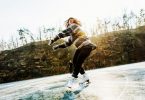

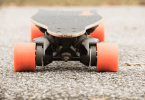

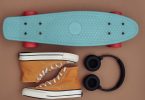
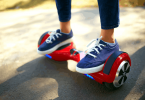

Leave a Comment